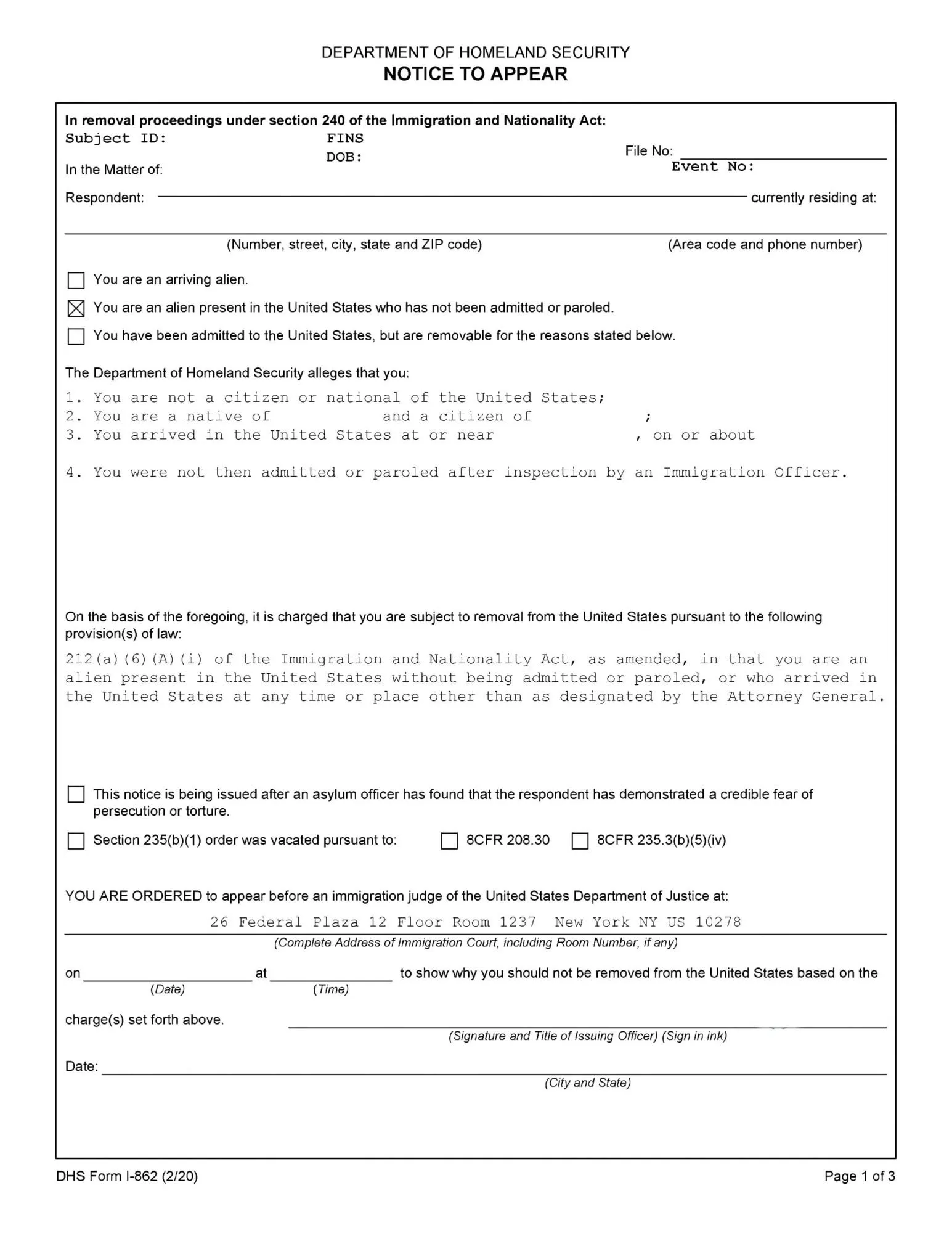Add your feed to SetSticker.com! Promote your sites and attract more customers. It costs only 100 EUROS per YEAR.
Pleasant surprises on every page! Discover new articles, displayed randomly throughout the site. Interesting content, always a click away
Williams Law
U.S. Immigration Law FirmEOIR-26, Notice of Appeal from a Decision of an Immigration Judge 1 Apr 2025, 12:07 pm
Last Updated: April 3, 2025.
What is Form EOIR-26?
Form EOIR-26 is a Notice of Appeal from a Decision of an Immigration Judge (“IJ”) in Executive Office of Immigration Reform (“EOIR”) immigration removal proceedings by a foreign national who seeks review of a IJ’s denial of a request of relief from removal.
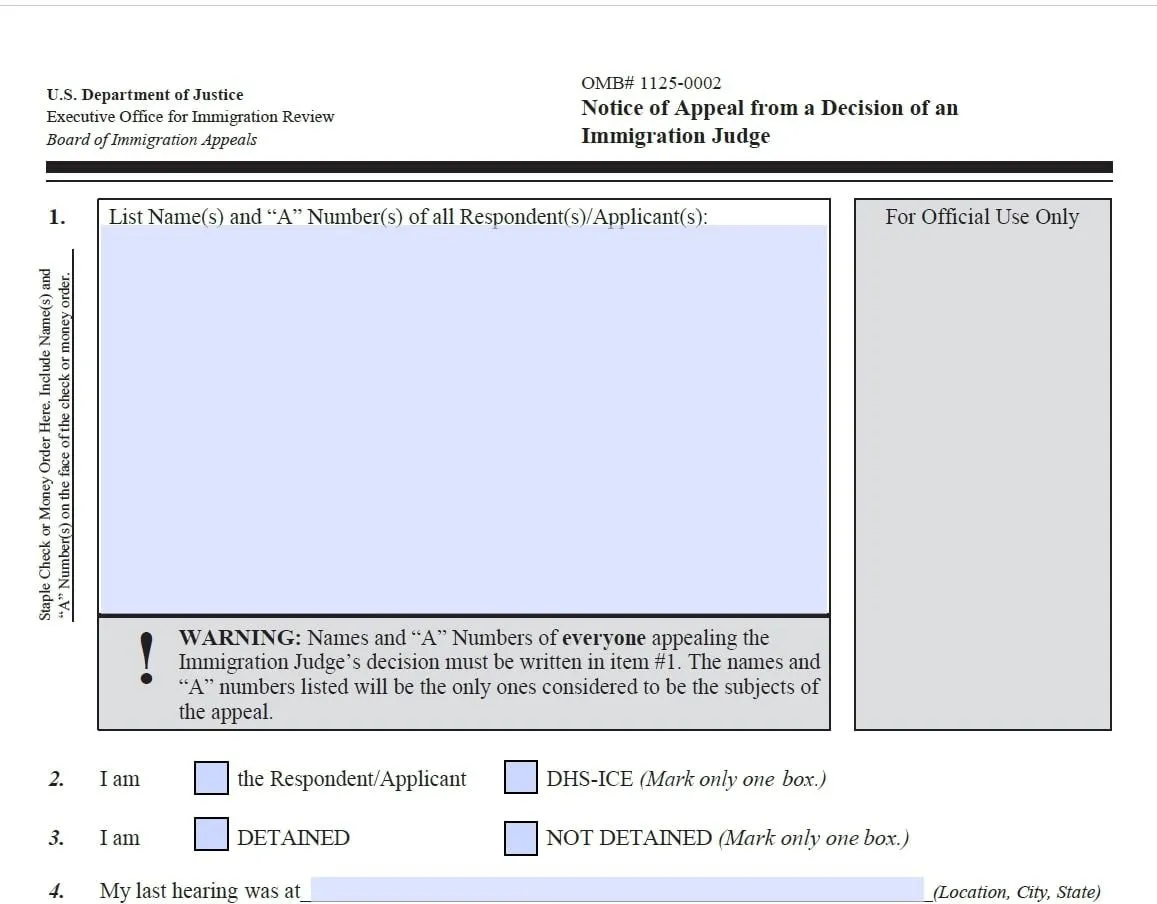
The foreign national in removal proceedings is referred to as a “respondent” throughout the process.
The forms of relief from removal include:
- Voluntary Departure
- Cancellation of Removal for Permanent Residents
- Cancellation of Removal for Nonpermanent Residents
- Asylum
- Withholding of Removal
- Convention Against Torture
- Adjustment of Status
- Special Rule Cancellation of Removal
In removal proceedings, a respondent must seek relief from removal by one or more the avenues mentioned above.
The Department of Homeland Security (DHS) is represented by Immigration and Customs Enforcement’s Office of Principal Legal Advisor (“OPLA”) and serves as prosecutor on behalf of the government.
If the IJ concludes that the respondent does not qualify for relief or failed to meet the burden to establish eligibility for the relief sought, the IJ will deny the application and order the respondent removed (deported) from the United States.
When a foreign national receives a denial, time is of the essence to file a Form EOIR-26 which puts the EOIR and OPLA on notice that the respondent is filing an appeal of the IJ’s decision.
The same form is used to appeal decisions in which DHS disagrees with the approval of respondent’s request for relief and seeks review of the approval of respondent’s relief.
The approval results in the termination of the immigration proceedings against the respondent.
The EOIR-26 must be filed and received by the Board of Immigration Appeals (“BIA”) within 30 days after the Immigration Judge’s oral decision.
The judge will ask the respondent if there is a desire to appeal the decision.
It is important for the respondent to say “yes” to reserve the right to appeal on the record.
If the IJ does not issue an oral decision in open court, the appeal must be filed and received by the BIA within 30 days after the date the Immigration Judge’s written decision was mailed.
Either way, if the EOIR-26 is not received within the requisite time period, the appeal will be dismissed.
Can you appeal an immigration judge decision?
Yes, an immigration judge’s decision may be appealed in cases in which the respondent disagrees with the denial and seeks review of the decision claiming that the IJ was incorrect in its analysis of the finding of fact(s) or conclusion(s) of law.
In cases where an appeal concerns discretionary relief, the respondent must state whether the alleged error relates to statutory grounds of eligibility or to the exercise of discretion and identify the specific factual or legal findings that are being challenged.
EOIR-26 filing fee
There is a $110 filing fee that must accompany the EOIR-26, which may be paid in one of two ways.
There is an EOIR payment portal found at: EOIR Payment Portal.
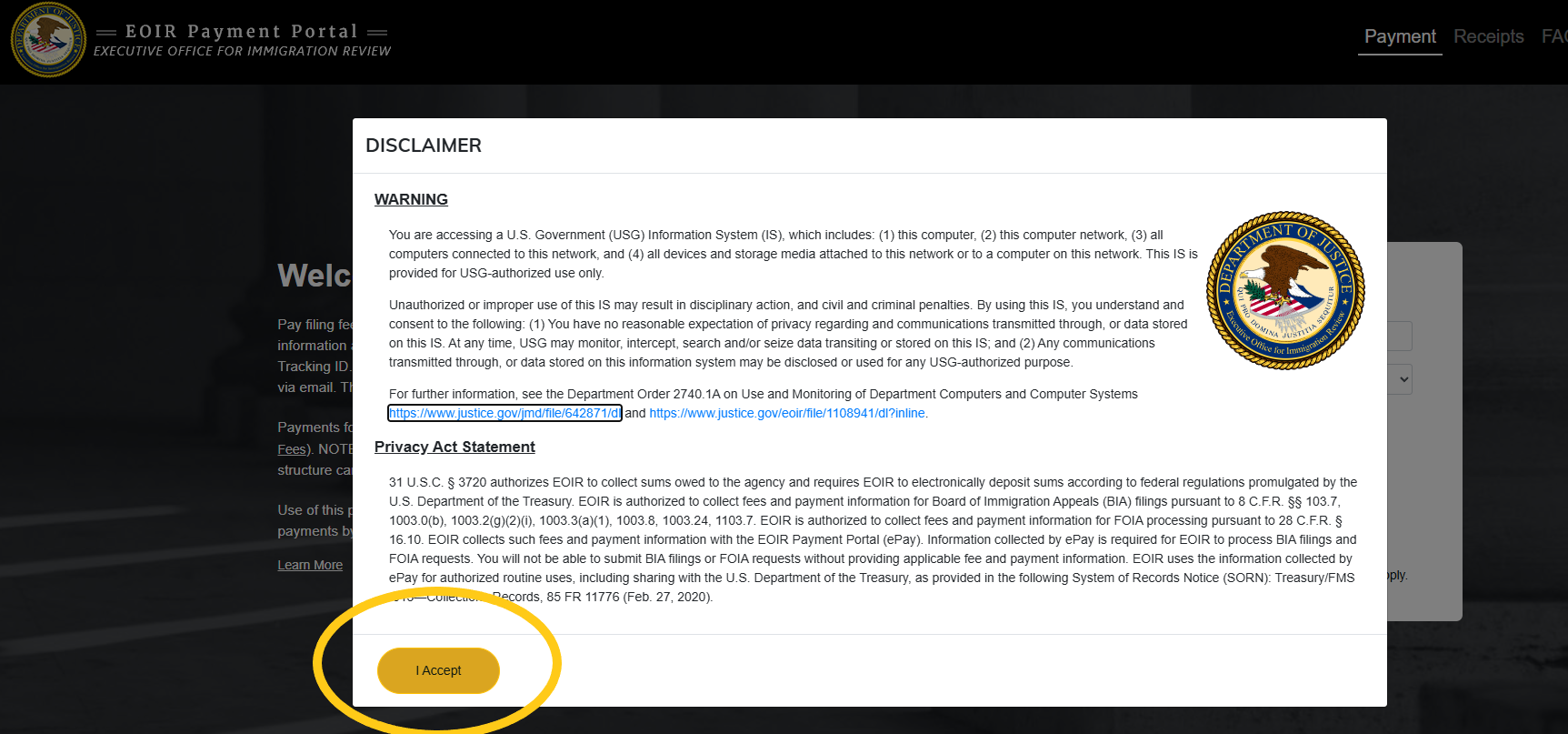
To make a payment through the EOIR payment portal, the respondent must provide the unique “A” number assigned to them by DHS and choose “Appeal (Form EOIR-26)” as the filing type from the drop-down menu. You can find your A number on the immigration judge order.
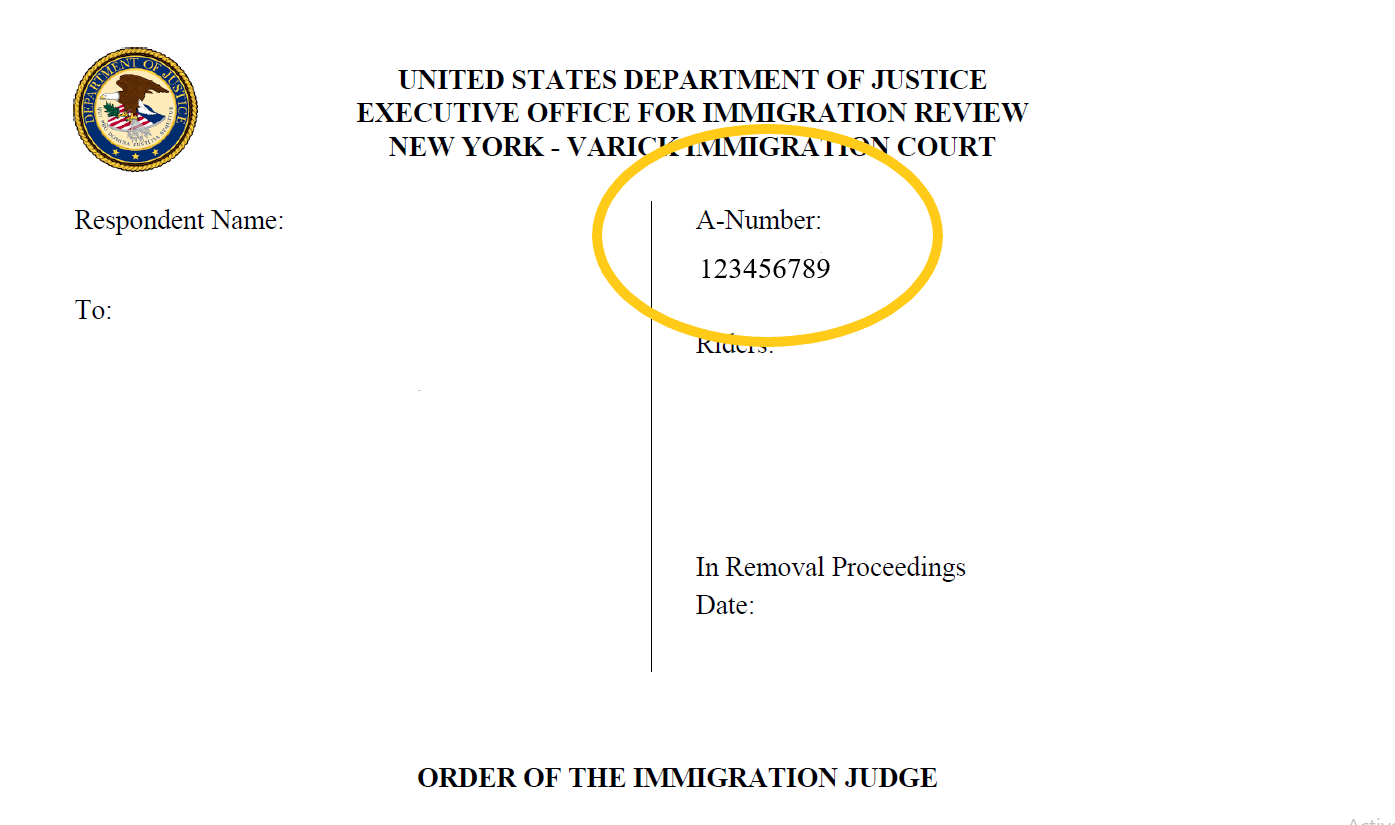
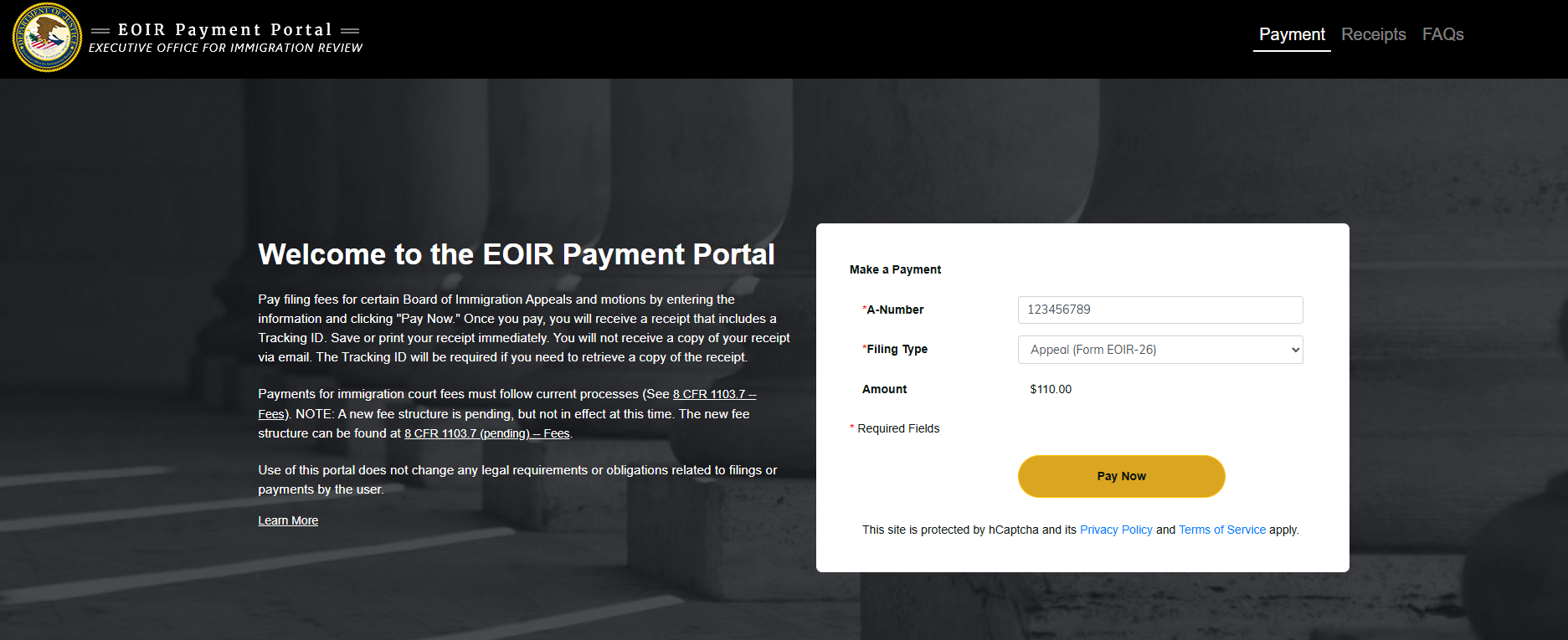
Launched in October 2020, the EOIR Payment Portal is a web-based application that allows filers to electronically pay BIA filing fees.
It was created to modernize the EOIR information technology efforts.
Its benefits include 24/7 access for filers to pay the filing fee(s) by various methods such as debit or credit card, PayPal account, Amazon pay, checking or savings account and immediate availability of the payment receipt upon the successful processing of payment online.
In addition, the EOIR Payment Portal saves time as the electronic payments are processed immediately and minimizes expenses due to the reduction of paper processing.
If the filing fees are paid through the EOIR payment portal, a copy of the receipt must be included with the filing of the EOIR-26 to the Board of Immigration Appeals as proof of payment.
The alternative to paying online is to send a check or money order payable to the “U.S. Department of Justice” in the amount of $110 along with the EOIR-26 to the BIA.
The check or money order must show the respondent’s name and “A” number, be drawn from a bank located in the U.S., and must be payable in U.S. currency.
If submitting a personal check, do not forget to sign it.
If the check is returned for insufficient funds, the appeal will be dismissed as improperly filed.
The appeal may be rejected or dismissed if the respondent fails to submit a receipt of payment from the EOIR payment portal, a check or money order or a properly completed fee waiver request.
EOIR-26 fee waiver
Form EOIR-26A is a Fee Waiver Request reviewed by the BIA and if approved, the appeal will be accepted without payment of the filing fee.
This form requires the respondent to declare under the penalty of perjury an inability to pay the filing fee and that the application is valid (non-frivolous) and true and correct to the best of his/her knowledge.
The respondent must provide the source(s) and amount(s) of monthly income, and the source(s) and amount(s) of monthly expenses and any other information that helps explain the reason(s) why the respondent cannot pay the filing fee.
If the form does not establish the inability to pay the requisite filing fee, the appeal will not be deemed properly filed with the BIA.
Sample EOIR-26



What happens when you appeal an immigration judge’s decision?
The procedures to submit an appeal to the BIA are covered in the BIA Practice Manual.
The appeal process begins when the EOIR-26 is received by the BIA within 30 days of the IJ’s decision.
Once the Notice to Appeal is received by the BIA, the BIA will obtain the record of proceedings from the immigration court and sends a written receipt and when appropriate, a briefing schedule to both parties which outlines the deadlines by which the appellate briefs must be filed with the BIA.
An appellate brief advises the BIA of the appealing party’s position and arguments.
The body of the brief is limited to 30 pages so it is recommended that the brief be clear, concise, and well- organized and should cite the record and legal authorities fully, fairly and accurately.
The body of the brief includes the statement of facts and procedural history, statement of issue(s) presented for review, standard of review to be applied by the BIA, summary of the argument, the argument in full and a conclusion.
The brief should also include a cover page, table of contents, table of citations, signature block, certificate/proof of service to opposing party, addendum containing statutes, rules, regulations and/or case law; and supporting documentation.
While the appeal is pending before the BIA, the respondent may seek a stay of removal. Stays are automatic in some cases, but discretionary in others.
Can I file EOIR-26 online?
Yes, the EOIR-26 may be filed online but only by DHS, attorneys and accredited representatives in cases eligible for electronic filing through the EOIR Courts and Appeals System (“ECAS”) online filing system at: Executive Office for Immigration Review | EOIR Courts & Appeals System (ECAS) – Online Filing.
ECAS is available at all immigration courts and the BIA and its use became mandatory on February 11, 2022, for attorneys and accredited representatives to file to represent a respondent, file court and appeal documents and view case details, view and download electronic records of proceedings (“eROPS”), register for an account and pay BIA filing fees.
DHS must use ECAS to file notices to appear (“NTA”), file court and appeal documents and view and download eROPS.
EOIR-26 filing address
If not eligible for filing through the ECAS system, the EOIR-26 must be mailed or delivered in person to the following address:
Board of Immigration Appeals
Clerk’s Office
5107 Leesburg Pike, Ste. 2000
Falls Church, VA 22041
What color is EOIR-26?
While it is no longer required that EOIR forms be filed on paper of a specific color, it is strongly encouraged to print the EOIR-26 on blue paper.
If a fee waiver request is being submitted with the appeal, the EOIR-26A should be printed on tan paper.
If the respondent is represented by an attorney, the EOIR-27, Notice of Appearance before the Board of Immigration Appeals, should be printed on yellow paper.
If the respondent moves while an appeal is pending, the Form EOIR-33 (Change of Address) should be printed on pink paper and filed with the BIA within five working days of the change to the respondent’s contact information.
The BIA sends all official correspondence to the address provided by the respondent and will only change the contact information in the EOIR’s records upon receipt of the EOIR-33 form.
How long do BIA appeals take?
The processing time to receive the BIA’s response to an appeal varies but is typically between 6-18 months after the submission of the brief.
As of last year, BIA appeals are facing longer processing times and it is not uncommon to have to wait two years for a decision.
What is the success rate of BIA appeals?
The Department of Justice does not publish the actual percentage of appeals that are approved by the BIA.
However, the BIA’s adjudication statistics may be found at: 38 All Appeals Filed, Completed, and Pending.
In the first quarter of 2025, 16,647 appeals have been filed, 8,406 have been completed and 127,214 appeals remain pending as the end of of the 2024 fiscal year.
Unofficial sources claim that the BIA approval rate is somewhere between 10-30 percent.
On what grounds can an appeal be denied?
Appeals may be denied for a multitude of reasons.
Some of the most common reasons are insufficient evidence, legal misinterpretation, procedural errors, incomplete or inaccurate documentation and failure to establish eligibility criteria.
Is the BIA decision final?
Generally speaking, yes, the BIA decision is final. If the BIA denies the respondent’s appeal, the underlying order of removal issued by the IJ becomes final.
This triggers the start of the “removal period,” a 90-day window in which DHS is obligated to actively try and remove the respondent from the United States.
What happens if a BIA appeal is denied?
There are a few options available to either party after the BIA renders its decision.
The respondent and/or DHS may file a motion to reconsider within 30 days of the BIA’s entry of a removal order or a motion to reopen within 90 days of the BIA’s entry of a removal order.
The BIA may also reopen proceedings sua sponte, which means it has the authority to reopen proceedings on its motion at any time on its own initiative, as long as the BIA was the last administrative body to issue a decision in the matter.
A motion to reconsider is exactly as stated. It is used in cases in which the BIA has made a factual or legal error or if there has been a change in law since the BIA’s decision and that change in law would cause the BIA to change its decision.
The respondent is limited to one motion to reconsider and cannot introduce new evidence or state new facts in the motion.
In comparison, a motion to reopen is filed based on the unavailability of material facts at the time of the BIA’s decision.
Here, the respondent bears a heavy burden in demonstrating that if the motion to reopen is granted, the newly available evidence would change the outcome of the case.
Finally, a petition for review may be filed and received in federal court no later than 30 days after the date of the BIA’s decision.
The Circuit Court of Appeals will review the BIA’s decision to issue a final removal order (including the finding of removability and the denial of any applications for relief); deny a motion to reconsider or a motion to reopen; or deny asylum in asylum only proceedings.
See Also:
The post EOIR-26, Notice of Appeal from a Decision of an Immigration Judge appeared first on Williams Law.
Expedited Removal 25 Mar 2025, 12:13 pm
Last Updated: April 3, 2025.
What Is Expedited Removal?
To fully understand what the term “expedited removal” means, it is important to have a basic understanding of US immigration law, the methods by which foreign nationals may be removed from the United States and the government agencies charged with this responsibility, namely Customs and Border Protection (“CBP”) and Immigration and Customs Enforcement (“ICE”).
Both CBP and ICE are sub-agencies of the Department of Homeland Security (“DHS”).
CBP’s mission statement is as follows: “Protect the American people, safeguard our borders, and enhance the nation’s economic prosperity.”
To that end, CBP operates to counter terrorism, combat transactional crime, facilitate lawful trade and protect revenue, facilitate lawful travel, and secure the borders.
The expedited removal process is one of the methods by which CBP officers secure the US borders.
Similarly, although distinguishable, Immigration and Customs Enforcement’s mission statement is “to protect America through criminal investigations and enforcing immigration laws to preserve national security and public safety.”
ICE also uses expedited removals to enforce immigration laws.
Created in 1996 as part of the Illegal Immigration Reform and Responsibility Act, expedited removal is a process by which a foreign national may be deported from the US, often without the opportunity for the individual to have a hearing before an immigration judge.
Under expedited removal, the deportation of the foreign national could take place within a matter of hours or days, unlike traditional removal proceedings which take place over the course of several months or years.
An expedited removal by CPB occurs at a US port of entry when a CBP officer denies an individual’s request to be admitted into the United States.
Typically, this occurs at international airports throughout the US but is also exercised by CBP officers at marine ports and land borders at designated entry points along the US-Mexican border and the US-Canadian border.
When a foreign national lands at an international airport in the United States, a CPB officer checks the passport, visa (if required) and fingerprints of the individual and asks specific questions to determine the purpose of the individual’s visit and length of stay requested.
This short interview will provide the CBP officer with enough information to determine if further investigation is necessary.
Some instances in which further investigation is warranted is when the CBP officer scans the individual’s passport and a “red flag” appears in the database, or the person appears to be overly nervous and cannot answer questions quickly and directly or the stated reason for the visit does not correspond with the visa category under which the individual is seeking entry.
If further investigation is needed to determine if entry into the US is appropriate, the individual will be sent to Secondary Inspection.
Here, the CPB officer(s) will delve into the reason(s) for the primary officer’s specific concern(s) regarding the individual’s admissibility into the US.
This may include further questioning, scrutinizing documents for authenticity, looking through the individual’s personal items and cell phone for any inconsistencies with the individual’s responses and/or reason for visit.
The following hypothetical highlights a typical encounter which may end in the individual’s expedited removal from the United States.
An individual at an international airport presents a tourist visa to the CBP officer and states that he is coming to the US to attend a cousin’s wedding and has an airline ticket to return to his home country five days later.
He appears overly nervous, does not maintain eye contact and is sweating profusely.
These behaviors lead the officer to believe that the individual is not being truthful or has something to hide.
The individual is sent to Secondary Inspection.
There, he shows the officer the wedding invitation.
The officer calls the venue listed on the invitation and determines that the individual presented a fraudulent document.
There is no wedding reception being held for the couple listed on the invitation at the time and date indicated.
Based on this information, the officer inspects the individual’s luggage and finds his original birth certificate, mechanic tools and clothing for warm and cold weather conditions, more than needed for a five-day trip to attend a wedding.
The officer proceeds to look through the individual’s cell phone and finds messages from a contact in the US stating the location of the body shop where he should appear to begin work the following day.
In this example, the individual lied to the CBP officer, presented a fraudulent document and intended to work in the United States.
A person seeking entry as a tourist is prohibited from being gainfully employed while in the US and is, therefore, inadmissible.
Based on this inadmissibility, the CBP officer may order expedited removal which allows the officer broad authority to have the individual immediately removed from the United States.
The foreign national will be detained by CBP until he is put on the next available flight back to his home country.
The CBP officer will cancel or revoke the tourist visa, and the words “CANCELLED” or “REVOKED” will appear across the otherwise valid visa.
A Form I-860 (Notice and Order of Expedited Removal) is issued to the individual and indicates that the individual is barred from returning to the U.S. for at least five years from the date of removal.
The Form M-444 Information About Credible Fear Interview is another form that is issued at the border by CBP officers and subjects a foreign national to expedited removal.
In this case, the foreign national expresses a fear of returning to the home country and is interviewed by an asylum officer to determine if the fear of persecution or past persecution is “credible” enough to proceed with an asylum application (Form I-589) and remain in the United States pending its outcome.
If the interviewing officer does not find the fear to be credible, the individual is subject to expedited removal.
Enforcement and Removal Operations (ERO), a division of ICE, manages all aspects of the immigration enforcement process, including the identification, arrest, detention and removal of foreign nationals who are subject to removal or are unlawfully present in the United States.
The ERO is broken down into several sub-divisions, each with its own objectives.
These include custody management, enforcement, field operations, ICE health service corps, law enforcement systems and analysis, non-detained management, operations support, and removal.
The ERO’s removal division coordinates, manages and facilitates efforts to remove foreign nationals from the United States.
To accomplish this mission, the removal division works closely with other ICE divisions, the U.S. Department of State and international entities to execute removal operations.
The ERO’s removal division is responsible for initiating and coordinating expedited removals outside of the purview of CBP.
ICE’s Air Operations provides commercial and chartered aviation support to the ERO’s 24 field offices throughout the United States.
It also provides air transportation to transfer the foreign nationals to staging sites to board flights that will return them to their countries of origin.
The Removal Management office coordinates the removal of the foreign nationals by collaborating within the agency and with other stakeholders, including foreign embassies and consulates.
ERO also has an international presence with personnel based overseas that serve as liaisons between ICE and the host-nation government officials to coordinate these removals.
Expedited Removal Under the Trump Administration
Significant changes in expedited removal procedures were implemented on the very first day of the current administration by Trump’s executive order entitled “Protecting the American People Against Invasion.”
Under Section 9 of the executive order, the Secretary of Homeland Security “shall promptly take appropriate action to use all other provisions of the immigration laws or any other Federal law, including, but not limited to sections 238 and 240(d) of the INA (8 U.S.C. 1228 and 1229a(d)), to ensure the efficient and expedited removal of aliens from the United States.”
Trump’s executive order broadened the scope of expedited removals.
Prior to this change, there were only two groups of individuals subject to expedited removal:
- persons who arrived by sea and were encountered within two years of entry, and
- individuals who are encountered within 100 miles of an international land border and within 14 days of entering the country.
Today, expedited removal may be applied to:
- any noncitizen who arrived at a port of entry, at any time, and is determined to be inadmissible for fraud or misrepresentation or lacking proper entry documents and
- any noncitizen who entered without inspection (by land or sea), was never admitted or paroled, is encountered anywhere in the United States and cannot prove that they have been physically present in the United States for the two years preceding a DHS officer’s determination that they are inadmissible for fraud or misrepresentation or lack of proper entry documents.
Essentially, DHS has expanded expedited removal to include any foreign national who does not request asylum or fails to establish “credible fear” of persecution if returned to the country of origin.
In the two months since the enactment of Trump’s executive order, the expedited removal process has been utilized by CBP and ICE officers to deport foreign nationals en masse.
Several issues arise when expedited removals are used to deport foreign nationals and circumvent the judicial process.
There have already been several reports of erroneous deportations in which US citizens, lawful permanent residents and foreign nationals that were in the US lawfully have been removed from the United States.
Similarly, there are circumstances that make certain individuals eligible to apply for relief from removal before the Executive Office of Immigration Review (EOIR) and expedited removal deprives these individuals of the opportunity to seek relief and remain in the United States.
The EOIR is a sub-agency of the Department of Justice that presides over immigration proceedings initiated by the Department of Homeland Security to remove foreign nationals from the United States.
Voluntary departure is an alternative to removal where the immigration judge orders the individual to leave the United States at no cost to the United States government.
The individual is given the opportunity to depart the US voluntarily at his or her own expense.
It is a win-win situation.
It is an avenue of relief that preserves government resources while not subjecting the individual to the same 5-year bar that applies to an individual in an expedited removal situation.
Expedited removal does not adequately protect asylum seekers as DHS does not have sufficient quality assurance mechanisms in place to ensure that the immigration officers are not improperly handling valid asylum claims.
In certain cases, individuals are pressured by immigration officers to withdraw their application for admission and in so doing, also unwittingly withdraw their request for asylum.
Furthermore, the individuals expressing fear of persecution or torture must be interviewed by asylum officers and these interviews, in the context of expedited removal, are now prioritized by DHS.
This, in turn, creates a tremendous backlog of affirmative asylum cases due to the limited resources within the Asylum Office being allocated to the scheduling of the “credible fear” interviews for individuals facing expedited removal.
In 2020, the Supreme Court upheld a law that limited habeas review of expedited removal proceedings as constitutional under the Suspension Clause in the landmark case of Department of Homeland Security v. Thuraissigiam, 591 U.S. ___ (2020).
This decision reinforces that foreign nationals facing expedited removal have very limited avenues to challenge these decisions, including credible fear determinations.
Judicial review is only allowed in cases where the following three questions are addressed:
- whether the petitioner is an alien;
- whether he or she was order removed under the expedited removal statute; and
- whether the petitioner is in lawful status as a permanent resident, asylee or refugee.
In practice, there are only two avenues available to foreign nationals that are subject to or have already been deported by expedited removal.
If the individual is still in the United States but the expedited removal has not yet been executed, the foreign national may contact the CBP or ERO office that issued the order and make a written request that the agency exercise discretion in favor of the foreign national which would allow for reconsideration and rescission of the expedited removal order.
If the individual has already been deported by expedited removal and seeks re-entry into the US, the filing and approval of a Form I-212, Application for Permission to Reapply for Readmission (and if necessary, Form I-601 Application for Waiver of Grounds) which will allow the individual to re-enter the US without having to wait the requisite five year period outside of the US following the expedited removal.
With the current administration’s expansion of the expedited removal process, foreign nationals are extremely concerned about the possibility of deportation, and rightfully so.
Therefore, it is critically important for these individuals to know how to proceed in the event of an encounter with a CPB or ICE officer.
They do have the right to remain silent.
They do NOT have to answer if an officer knocks at the door of the person’s residence.
Alternatively, if the foreign national has been physically present in the United States for a period of two years or more, it is suggested that the individual carry documents that prove the physical presence.
Finally, if the individual is afraid of returning home, it should be communicated to the officer immediately so that a “credible fear” interview be scheduled to determine the eligibility to pursue an asylum claim.
See Also:
The post Expedited Removal appeared first on Williams Law.
Individual Hearing in Immigration Court 19 Mar 2025, 9:48 pm
Last Updated: April 3, 2025.
The Executive Office for Immigration Review (EOIR), also called Immigration Court, is the sub-agency of the Department of Justice responsible for conducting legal proceedings to remove foreign nationals from the United States.
The Immigration and Customs Enforcement’s Office of Principal Legal Advisor (OPLA) represents the Department of Homeland Security (DHS) in these proceedings and the foreign national that is the subject of the proceedings is referred to as the “Respondent.”
A Notice to Appear (NTA) is the charging document issued by the DHS and filed with EOIR to commence proceedings against a foreign national.
The NTA serves as the official notice in which DHS claims that the foreign national has violated a specific section of the Immigration and Nationality Act (INA) and seeks removal of the individual from the United States based on the alleged violation(s).
Removal (deportation) proceedings officially commence upon DHS’ filing of the NTA with the Immigration Court.
Typically, the Immigration Court is selected based on the geographic location of the Respondent’s residential address in the United States.
If Respondent moves after the commencement of removal proceedings, a motion to change venue may be filed requesting that the case be moved to an immigration court closer to the respondent’s new residential address.
Venue may also be changed for other reasons including: location of the attorney’s office, significant health issues of respondent or a close family member, and safety concerns or threats at the current venue.
The NTA contains enumerated pleadings that state, with specificity, the factual allegations that form the basis of the removal.
It lists the foreign national’s name, country of citizenship and the date and manner in which the individual last entered the United States.
Based on these allegations, DHS cites the section(s) of the law that subject the foreign national to removal from the United States.
The NTA also orders the foreign national to appear before an immigration judge at the designated court’s location, on a specific date and time, to show why the foreign national should not be removed from the United States.
This initial hearing is known as a Master Calendar hearing where the respondent will either admit or deny the factual allegations as enumerated on the NTA and advise the court of any application(s) for relief that the respondent will pursue to remain in the United States.
There may be several master calendar hearings scheduled in a case as these appearances are generally brief in nature and scheduled periodically for the court to take care of “housekeeping” items including the taking of the pleadings, any issue(s) regarding removability and the filing deadlines for the applications for relief.
The applications for relief that may be available to the Respondent include: asylum, cancellation of removal, adjustment of status, withholding of removal, waivers, deferral under the Convention Against Torture (CAT), amongst others.
Once the application for relief has been filed with the court and properly served on DHS, an individual hearing date will be scheduled by the judge at the next master calendar hearing.
The individual hearing is the final hearing in removal proceedings in which the Respondent bears the burden of proving eligibility for the relief sought.
This is achieved through documentary evidence and witness testimony.
DHS is also given the opportunity to present evidence to the contrary to uphold the law as stated in its NTA filed with the court.
An individual hearing is akin to a trial where witnesses are questioned and cross-examined, and documentary evidence reviewed with each party challenging the other’s position regarding removability and/or Respondent’s eligibility for relief in its opening and closing arguments.
Adequate preparation for the individual hearing is critical to ensure that the Respondent provides evidence and testimony that are convincing and credible enough for the judge to decide that the respondent has met its burden in proving eligibility for the relief sought.
There are several factors to consider when preparing for an individual hearing.
First and foremost, it is critically important that all parties are familiar with the EOIR practice manual to ensure that all procedures and rules are followed on the day of the hearing.
Respondent’s documentary evidence must be gathered, organized and filed with the court and served on DHS.
This includes the application for relief, supporting exhibits, witness lists, motions and a criminal history chart, if applicable.
Respondent must review all documentation submitted to the court so that there are no surprises on the day of the individual hearing.
There are many cases in which years have passed from the date of filing an application for relief to the individual hearing date.
Over time, memories fade and details are forgotten. Respondent’s inability to recall certain events may bring into question the credibility of the testimony being given.
To that end, Respondent and any witnesses providing testimony at the individual hearing should practice how they will answer the questions being asked on direct examination and anticipate the questions that may be asked during cross examination so that they can formulate appropriate responses in advance.
While it is normal to be nervous, a witness that appears overly anxious while on the stand unwittingly conveys a message that the testimony being given is not genuine or truthful.
Conducting a mock hearing may be appropriate in cases in which the respondent and/or witness(es) suffer with mental health issues such as anxiety or PTSD, are simply nervous by nature or have a fear of speaking in public.
In these cases, practice makes perfect and sufficient time should be allocated accordingly.
The opening and closing arguments should also be prepared in advance so that the key points of the case are concise and compelling and persuasive enough for the judge to rule in respondent’s favor.
In asylum cases, the individual hearing is also known as a “merits” hearing and is the respondent’s final day in court to present evidence and testimony to convince the judge that the respondent has been persecuted or has a credible fear of persecution in his or her home country due to the respondent’s race, religion, nationality, membership in a particular social group or political opinion.
The respondent and DHS submit all documentary evidence and witness information to the judge in advance of the individual hearing date.
The hearing begins with the judge going on the record and confirming the Respondent’s name, and if Respondent is represented by counsel, that the attorney does speak on behalf of the Respondent in the proceedings.
The hearing is recorded by the judge and typically takes between two to four hours from start to finish.
Once all evidence has been presented and testimony taken, the judge may issue an oral decision at the end of the hearing or take the case under advisement and prepare a written decision to be issued at a later date.
All parties involved in an individual hearing are expected to appear in person, unless otherwise specified by the court in advance of the hearing date.
In-person hearings require the physical presence of the immigration judge, respondent and respondent’s attorney, the DHS attorney and witnesses in the courtroom at the time of the hearing.
This allows for direct, face-to-face interaction, which can be beneficial in cases where the credibility of the respondent’s testimony is being assessed by the judge.
Credibility plays a vital role in asylum cases where the judge must determine the reasonableness of the respondent’s fear of persecution if the respondent returns to his or her home country.
Internet-based hearings were introduced in 2020 in response to the COVID-19 pandemic where some or all the parties appeared virtually through platforms such as Webex by Cisco.
You can find your immigration judge Webex link here.
Virtual hearings are still being utilized by the courts today.
There are many advantages to hearings that are conducted virtually.
Namely, they provide convenience to the parties in that there is no travel time required to appear in court in person, thereby eliminating the costs associated with travel and in-person appearances by attorneys.
Most importantly, internet-based hearings make the courts more efficient.
Virtual hearings reduce wait time and streamline processing which allows the courts to allocate resources to better address the backlog of pending cases.
However, virtual hearings also carry the inherent risk that technological issues may arise and interfere with the court’s ability to conduct the hearing efficiently and effectively.
There is no way to adequately safeguard against these types of issues and poor internet connection or loss of power will disrupt the proceedings.
The individual hearing is the most important hearing in removal proceedings and any delay or disruption will impact the court’s docket and scheduling calendar.
If the individual hearing has to be re-scheduled due to technical issues, the judge instruct all parties to appear in person on the next hearing date.
Whether in-person or virtual, a judge’s decision at the conclusion of the individual hearing is either made orally or issued in writing.
If the judge grants the relief being sought by the respondent, an order indicating same will be issued which will simultaneously terminate the respondent’s removal proceedings.
In many cases, the written order serves as the proof required for the respondent to actively pursue the form of relief that was granted which allows the respondent to remain in the United States.
For example, if a respondent is successful in an asylum application, the judge’s written order will be submitted to USCIS when filing to adjust status to that of a Lawful Permanent Resident.
Without an order granting relief and/or terminating removal proceedings, the immigration court retains jurisdiction in the respondent’s immigration case.
USCIS cannot adjudicate cases in which the court has jurisdiction, and any petition or application submitted to USCIS without an order from the immigration judge will be denied for lack of jurisdiction.
When the respondent fails to meet its burden in establishing eligibility for the relief being sought, the judge will deny the application and issue a written order to remove the respondent from the United States pursuant to the charges contained in the NTA.
The judge’s decision is final unless an appeal (Form EOIR-26, Notice of Appeal from a Decision of an Immigration Judge) is filed with the Board of Immigration Appeals (BIA) within 30 calendar days of the date of the mailing of the written decision.
The respondent must file the notice of appeal with requisite fee (or fee waiver) to the BIA with proof of service to DHS and indicate whether respondent intends on filing a brief thereafter.
Upon receipt of the notice of appeal, the BIA will provide a briefing scheduling notice to respondent and DHS apprising each party of the date by which their brief must be submitted to the BIA.
If a brief is not submitted as indicated on the Notice of Appeal, the BIA may summarily dismiss the appeal and if respondent departs the US after the filing of the appeal but prior to issuance of the board’s decision, the appeal will be considered withdrawn, and the immigration judge’s decision will become final.
See Also:
The post Individual Hearing in Immigration Court appeared first on Williams Law.
Master Calendar Hearing in Immigration Court 5 Mar 2025, 12:35 pm
Last Updated: April 3, 2025.
Master calendar hearing is the first step of removal proceedings.
Removal proceedings is the process of deportation of foreign nationals who have violated U.S. immigration law.
The most common immigration violation is lack of lawful immigration status (for example, visa overstay).
Foreign nationals who request asylum at the U.S.-Mexico border are placed in removal proceedings too.
Before foreign nationals can be deported from the U.S., their case will be first reviewed by the immigration judge of an immigration court.
The U.S. immigration court system is officially known as “Executive Office for Immigration Review” and is part of the Department of Justice.
Master calendar is a preliminary hearing where pleadings, application(s) for relief and scheduling are discussed.
Master calendar hearings are scheduled after a foreign national has been served with a Notice to Appear (Form I-862). You can learn more about Notice to Appear here.
U.S. Department of Homeland Security (DHS) is responsible for immigration law enforcement and for service of Notices to Appear on foreign nationals.
After properly serving the Notice to Appear on a foreign national, the case is forwarded to the immigration court that has jurisdiction over the foreign national.
For example, if a foreign national resides in Queens, NY, the New York Immigration Court located at 26 Federal Plaza, New York, NY 10278 has the jurisdiction over the case.
Immigration court then schedules the master calendar hearing.
To give a respondent enough time to find an attorney, master calendar hearings are scheduled at least 10 days after the Notice to Appear was served on the foreign national.
Before 2020, it could take about 2-3 months for the master calendar hearing to be scheduled by an immigration court.
However, due to the current backlog of 3.7 million cases in immigration courts nationwide, it can take up to 3 years to get a master calendar hearing date scheduled.
Foreign nationals who were placed in removal proceedings are called “Respondents”.
At master calendar hearings foreign nationals are often represented by immigration attorneys who answer immigration judge’s questions on their client’s behalf.
The U.S. government does not provide immigration attorneys for foreign nationals placed in removal proceedings.
Foreign nationals hire immigration attorneys at their own expense, seek pro bono legal services, or remain unrepresented (“pro se”).
If a foreign national is not represented by an attorney, an immigration judge can reschedule the master hearing for a later date to allow the respondent to seek legal counsel.
Some foreign nationals are detained by the Department of Homeland Security (DHS) for the whole duration of their removal proceedings.
The majority of respondents in immigration courts are non-detained.
Removal proceedings involve complex legal procedures, so hiring an attorney may improve your chances of winning your case.
If a respondent is represented by an attorney, the master calendar hearing takes no longer than 5-10 mins.
At the master calendar hearings the following issues will be reviewed by the immigration judge:
- Was the Notice to Appear served on the respondent?
- Does the respondent agree with the allegations or deny them?
- Does the respondent plan to apply for any relief from removal (for example, asylum, cancellation of removal, Adjustment of Status, etc.)?
- If the plans to file any applications, the deadlines for submitting the forms and evidence
- Date of the individual hearing where the application will be reviewed on its merits
If an individual hearing is scheduled, respondents must appear for the hearing and submit the required immigration forms and supporting documents at least 30 days prior to the individual hearing date. Respondents must periodically track their immigration court hearing status online.
Respondents are allowed to present evidence in support of their applications, testify in court, and call witnesses.
The opposing party (DHS attorney) can present evidence, cross-examine the respondent and their witnesses.
See Also:
The post Master Calendar Hearing in Immigration Court appeared first on Williams Law.
Notice to Appear (Form I-862) 28 Feb 2025, 9:41 pm
The post Notice to Appear (Form I-862) appeared first on Williams Law.
What is Trump’s “Gold Card?” – New U.S. Immigration Pathway Guide 26 Feb 2025, 4:42 pm
Last Updated: April 3, 2025.
On February 25th, 2025, President Donald Trump announced a proposal to introduce a brand new U.S. immigration pathway to lawful permanent residency. Through the new program, the U.S. would offer a “gold card,” which Trump says would also provide a pathway to eventual U.S. citizenship. Keep reading below to see what we know about this potential new U.S. immigration status and who could be eligible.
Details Surrounding Trump’s Gold Card Proposal
Since the gold card program was just announced, details are currently limited, and we should know more when the program is fully fleshed out by the Trump administration. Here are five key takeaways based on what we know so far:
-
Trump’s plan is for the gold card program to replace the EB-5 Immigrant Investor Program.
First introduced as an amendment to the Immigration and Nationality Act (INA) in 1990, the EB-5 visa may be axed if the gold card legislation is passed into law. The EB-5 Program has allowed foreign investors to seek lawful permanent residency in exchange for a minimum investment of $1,050,000 in a U.S. business or $800,000 in a business located in a Targeted Employment Area (TEA).
The future of the EB-5 visa remains uncertain because a U.S. president does not have the power to override an act of Congress, which includes the INA. As of right now, the current legislation in place says that the EB-5 Program is authorized through Sept. 30, 2027.
-
The gold card program would require a substantial one-time fee, not an investment.
Unlike the EB-5 Program, the gold card program would not require foreign individuals to make an investment in a U.S. business to stimulate the economy and create jobs for U.S. workers. Instead, gold card seekers would only need to pay a one-time fee of $5,000,000, a giant leap from the EB-5 investment requirements. This would make the gold card the most expensive of its kind in the world.
-
A gold card would grant the same benefits as a green card.
President Trump states that his plan would be to issue gold cards to individuals who pay the $5,000,000 fee and successfully pass through a vetting process. Once issued, Trump says, “It’s going to give you green card privileges plus it’s going to be a route to citizenship.”
-
The pathway to citizenship through a gold card remains unclear.
President Trump predicts that the gold card would offer a “fast and smooth” pathway to residency. It’s worth noting that the EB-5 visa has already offered a pathway to U.S. residency and eventual U.S. citizenship for foreign investors. However, EB-5 applicants experience long wait times and must adhere to specific requirements before they are eligible to apply for citizenship.
The EB-5 visa is issued with conditions for a period of two years. Additionally, it typically is required to live in the U.S. for at least five years on an EB-5 visa before you are eligible to begin the citizenship application process. It is unclear if a gold card will have conditional residency and physical presence requirements like the EB-5 visa, but Trump’s statements indicate that the gold card would potentially offer an expedited pathway to U.S. citizenship.
-
The gold card program may face legal challenges.
Following its introduction, President Trump’s proposal was met with some controversy. Trump’s Commerce Secretary, Howard Lutnick, cited “nonsense” and “fraud” as reasons for axing the EB-5 visa. Many skeptics believe that this may be a projection of what the introduction of a gold card could promote.
In countries that have “golden visa” programs, citizens have taken issue with money laundering and fraud schemes born out of these programs. Additionally, concerns over housing costs seeing an increase were expressed by many since the EB-5 program has traditionally attracted lots of real estate investors.
The U.S. government practices a “checks and balances” system. Therefore, any proposed gold card legislation would need to be introduced as a bill in Congress, debated and voted on by both chambers of Congress (The Senate and the House of Representatives), then signed into law by President Trump. It is also likely that Trump’s political opposition will take the matter to court for judicial review.
Republicans currently hold the majority of seats in the House and the Senate, so when the bill is introduced, it is likely to be passed. If the bill makes it to the The Supreme Court of the United States, which is made up of nine members, six of whom lean more conservative and three of whom lean more liberal, the decision is likely to be in Trump’s favor. Therefore, we predict that any gold card legislation introduced is likely to become a law. There is also a chance that Trump’s proposal could be struck down by legislators before it is introduced in Congress.
What to Do Next
There’s not much to do at this point, but wait for the legal process to see this proposal through. Williams Law will monitor gold card news and provide important updates regarding the legal process for this proposed legislation. If you have any questions regarding your U.S. immigration options, book a free consultation with our experienced and knowledgeable attorney today.
See Also:
Investor Visa, How to Obtain U.S. Permanent Residency Through Investments
The post What is Trump’s “Gold Card?” – New U.S. Immigration Pathway Guide appeared first on Williams Law.
Deportation (Removal) Proceedings 21 Feb 2025, 5:23 pm
Last Updated: April 3, 2025.
Deportation (“removal”) proceedings is the process of deportation of noncitizens who violated U.S. immigration law.
The process is initiated by the U.S. Department of Homeland Security (DHS).
DHS is the federal agency responsible for adjudication of immigration applications and enforcement of immigration law.
The deportation process typically starts with DHS issuing a noncitizen the “Notice to Appear” (NTA), or Form I-862.
Notice to Appear contains the following details:
- Noncitizen’s full name
- Noncitizen’s date of birth
- Noncitizen’s A-number (“Alien Registration Number”) – if a noncitizen has never been issued an A-number before, one will be assigned
- Whether a noncitizen has been admitted to the U.S. or not
- Details of noncitizen’s entry to the U.S. (date and location of the most recent entry)
- Country of noncitizen’s birth and nationality
- Allegations of noncitizen’s removability (deportability)
- Date and location of noncitizen’s next immigration hearing
- Name and signature of the CBP or DHS officer who served this notice
- Noncitizen’s signature confirming that the notice has been received
When a noncitizen acknowledges the receipt of this notice, it means that the DHS has properly served the notice on a respondent.
Once a Notice to Appear is served, the noncitizen becomes a “respondent” in the deportation proceedings.
All respondents are divided into two categories:
- Detained
- Non-detained
Detained respondents are kept in the DHS custody at various detention centers during their removal proceedings.
To locate a detainee, you can use the Online Detainee Locator System.
To locate a detainee using this online tool, you will need the following information:
- Detainee’s A-number and country of birth; OR
- Detainee’s first, last name, country of birth, and date of birth
On the other hand, non-detained respondents are not kept in detention centers and are required to appear for any scheduled immigration court hearings.
Respondents can track the status of their immigration hearings on the EOIR website.
Unless the respondent is subject to “expedited removal”, noncitizens appear before an immigration judge.
The immigration judge will hear the detainee’s case and decide whether the US government can deport the noncitizen or not.
Some respondents might be eligible for protection from deportation (for example, Asylum, Withholding of Removal, or Protection under the Convention Against Torture).
Respondents can be represented by immigration attorneys throughout the deportation proceedings.
The U.S. government does not provide attorneys for respondents. Noncitizens placed in deportation process must either hire an immigration attorney on their own or seek pro bono representation.
Removal proceedings in immigration courts typically consist of two steps:
Step 1. Master Calendar Hearing.
A master calendar hearing is a short hearing where the respondent indicates whether the DHS allegations are accurate and if the respondent plans to apply for any type of relief from deportation (for example, family-based immigration petition, asylum application, etc.) If a respondent plans to file any applications, the immigration judge will set another hearing (individual) where the merits of the application will be reviewed by the immigration court. If the respondent does not indicate intention to file any applications for relief from deportation, the immigration judge might issue an order of deportation (removal) during this hearing. In some cases, more than one master calendar hearing is required.
Step 2. Individual (“Merits”) Hearing.
During the individual hearing the immigration judge will review the application(s) and evidence the respondent has submitted. Respondents can testify in support of their applications, call witnesses, and present other evidence in the hearing. DHS as an opposing party can also submit evidence in support of the noncitizen’s deportability. At the end of the hearing, the immigration judge will decide whether the respondent can stay in the U.S. or DHS can deport them to their country of origin. Both the respondent and DHS have 30 days to appeal the immigration judge decision. Appeals are filed with the Board of Immigration Appeals (BIA). If the respondent loses their case with the BIA, the decision can be appealed to the Federal Circuit Court of Appeals. The last stage of appeal is the U.S. Supreme Court. However, the U.S. Supreme Court does not accept all cases for review and therefore, appeal is not guaranteed.
Once the order of removal becomes final, the DHS has the right to remove a noncitizen to their country of origin.
Expedited Removal
Expedited removal is a streamlined process of deportation where noncitizens are not given a right to appear before an immigration judge.
Expedited removal applies to the following groups of noncitizens:
- Noncitizens arriving at a port of entry
- Noncitizens who do not possess valid entry documents (such as a US visa or Advance Parole)
- Noncitizens who tried to enter the US through fraud or misrepresentation
Expedited removal also authorizes the DHS to deport foreign nationals if they:
- Were not admitted or paroled by immigration authorities
- Cannot establish 2 years of physical continuous presence in the US at the time of arrest
See More:
EOIR-26, Notice of Appeal from a Decision of an Immigration Judge
The post Deportation (Removal) Proceedings appeared first on Williams Law.
EOIR Case Status 20 Feb 2025, 3:13 pm
Last Updated: April 3, 2025.
How to check your EOIR case status
EOIR Case Status is the immigration court hearing status of non-citizens who were placed in deportation (“removal”) proceedings in the U.S.
EOIR stands for “Executive Office for Immigration Review”, the federal agency that conducts immigration court proceedings.
Foreign nationals placed in deportation proceedings are known as “respondents”.
To check your immigration court case status, you need to enter your Alien Registration Number (A-number) on this page:
https://acis.eoir.justice.gov/en/
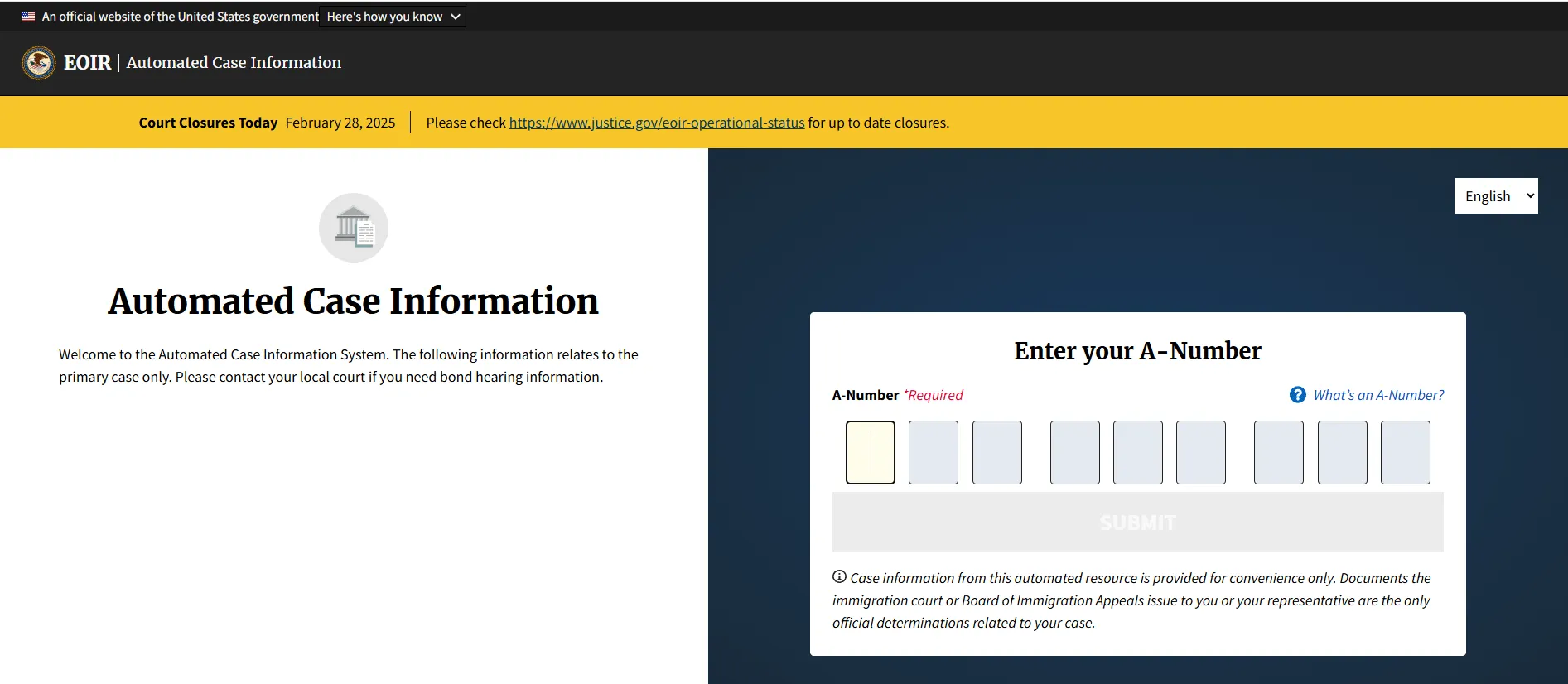
A-number is a 9-digit unique number assigned to foreign nationals who are applying for various immigration benefits or have been placed in deportation (“removal”) process.
You can find your A-number on the following documents:
Notice to Appear (NTA, DHS Form I-862)
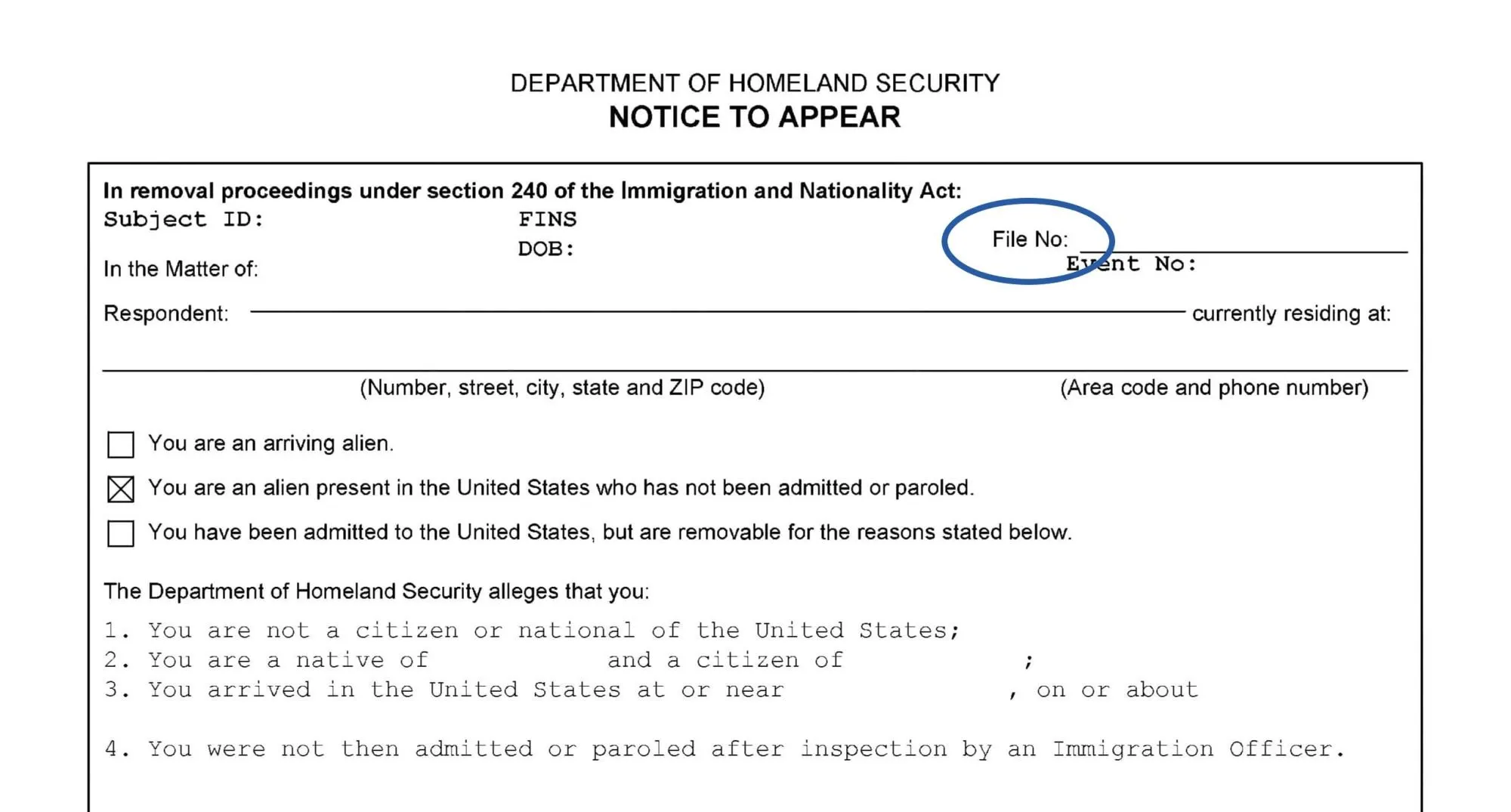
USCIS application registration notice
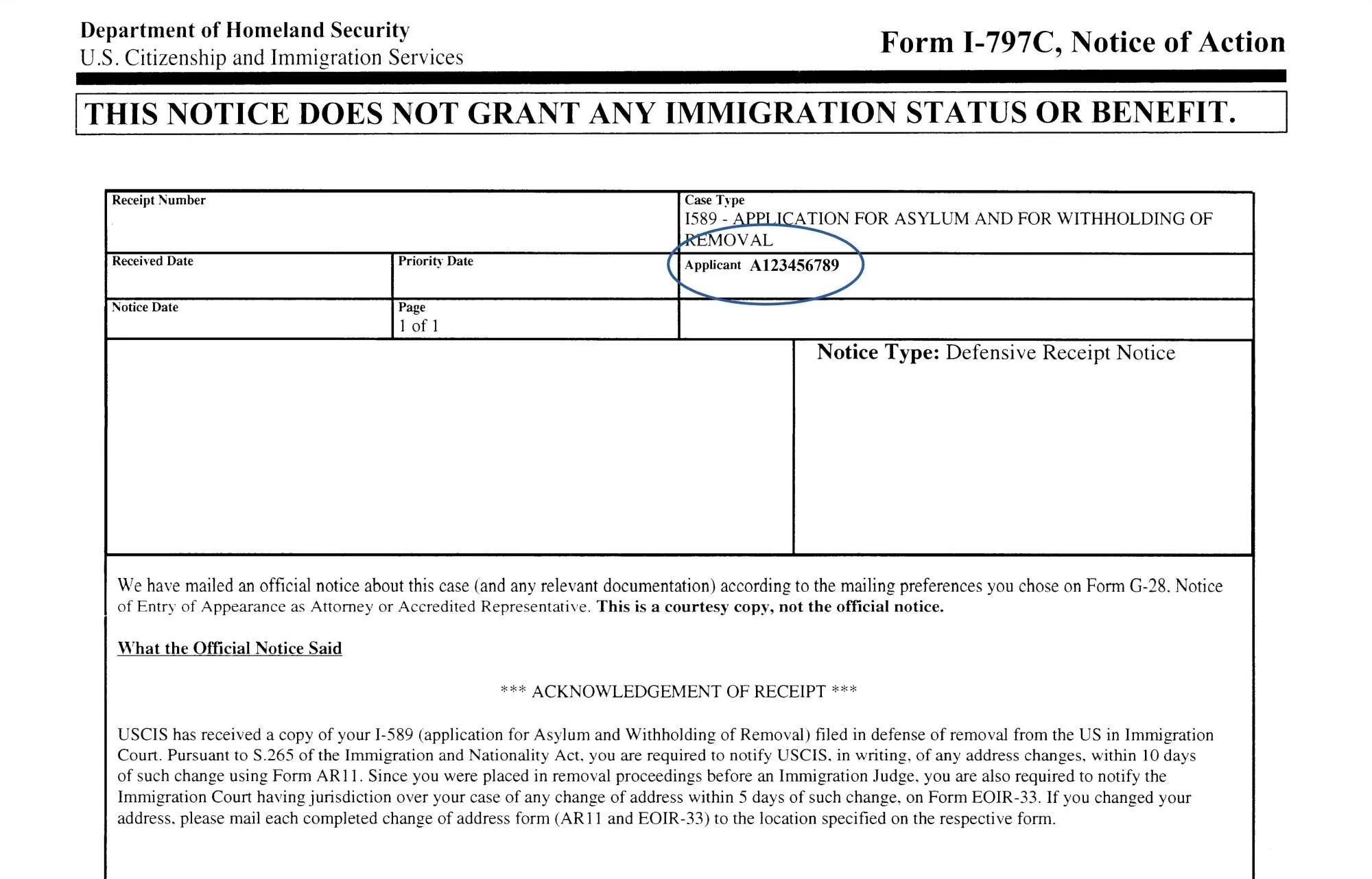
Biometrics appointment notice

Application/petition approval notice
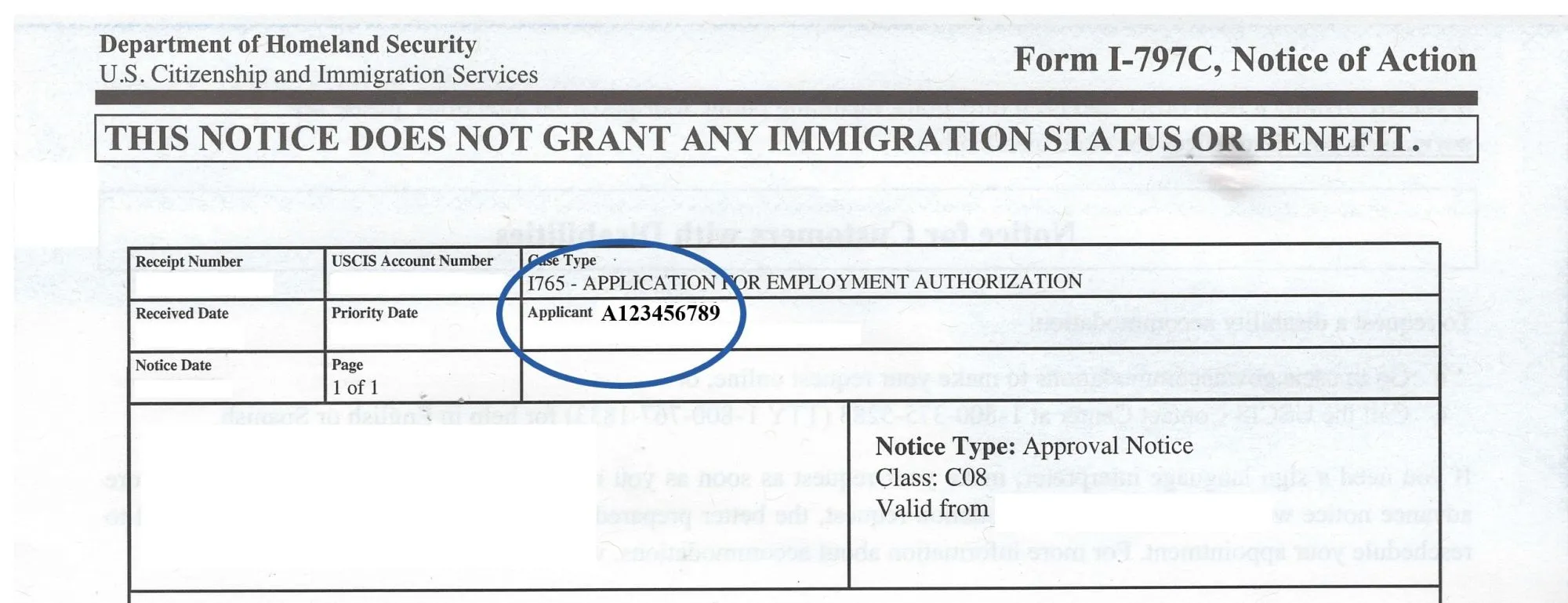
EAD (Employment Authorization Document) in the “USCIS#” field
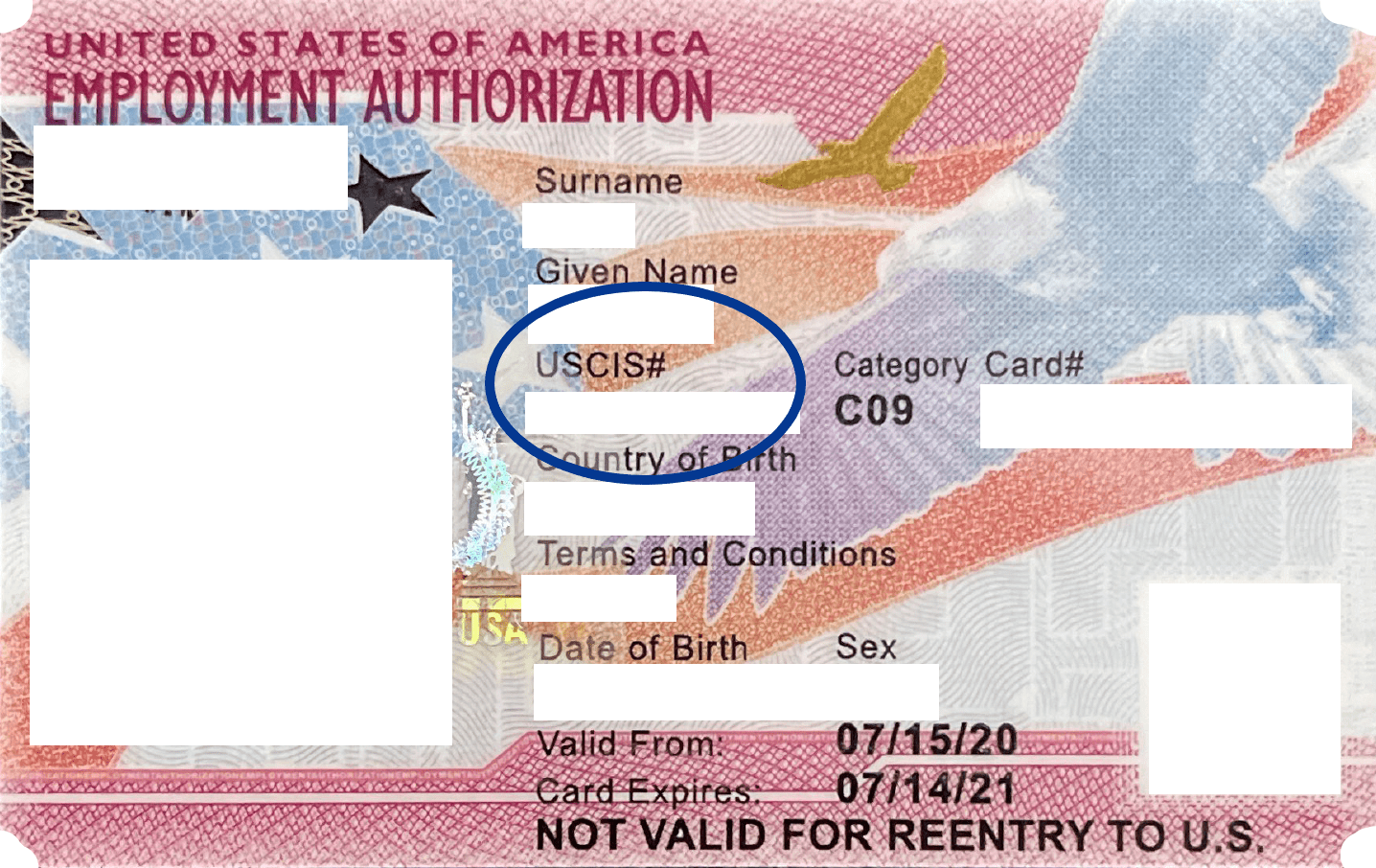
Other CBP (Customs and Border Patrol) documents issued to you if you have entered the US through Mexico or Canada
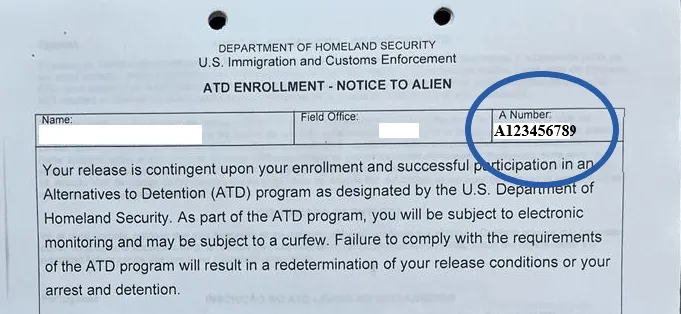
After entering your A-number, you will see the following information:
- Your full name
- Your A-number
- Next Hearing Information
- Your immigration judge name
- Court Decision and Motion Information
- BIA Case Information
- Court Contact Information
Next Hearing Information
Here, if you have an immigration court hearing scheduled, you will see:
- Your next Master Calendar Hearing date
- Your next Individual hearing date
- If the court hearing will be conducted in person or via Webex (online video conference app)
Court Decision and Motion Information
In this section of your EOIR case status, you can see the latest court decision (for example, approved or denied) and motion information. Motion is a written request submitted by the respondent’s immigration lawyer (if applicable) or DHS (Department of Homeland Security).
BIA Case Information
This section displays the latest appeal status of the respondent’s case and is available only if you have filed an appeal of the immigration judge’s decision with the Board of Immigration Appeals (BIA). Immigration judge’s decision can be typically appealed within 30 days after the decision was issued. If you fail to properly file your appeal with BIA, you will lose your right for appeal.
Court Contact Information
This section will display the immigration court’s address and phone number. If your immigration court hearing is scheduled in person, you should attend the hearing at this address. If you want to mail documents to the immigration court (for example, change of address, or asylum application), you can either file the documents in person or mail them to the address provided in this section. The case files for most removal (deportation) proceedings that were initiated in 2022 or after, are kept electronic format.
What is Master Calendar Hearing
Master Calendar or “Master Hearing” is a short preliminary hearing where the respondent (foreign national placed in deportation proceedings) indicates to the immigration judge whether he/she intends to apply for any relief from deportation (for example, asylum).
It is recommended that respondents have an immigration attorney (lawyer) representing them throughout the removal process.
If the respondent needs more time to find an immigration attorney, the immigration judge may reschedule the master hearing for a later date.
Even if you do not have a lawyer, or do not speak English, you MUST attend the master hearing at the time and location (in person or Internet) as indicated in your EOIR online case status.
Failure to attend the scheduled immigration court hearing (master calendar or individual), will result in automatic deportation (also known as “in absentia removal order”).
This means that the immigration judge will issue an order deporting you to your home country without you being present in the court and without reviewing the applications you might have (for example, asylum or protection under the Convention Against Torture).
It is important that you periodically monitor your EOIR case status, timely update your address with the immigration court and attend all hearings.
What is Individual Hearing
During the individual or “merits” hearing the immigration judge will review your case and determine whether you can stay in the US or will be deported to your country of origin.
Respondents are allowed to submit applications, evidence in support of their applications, call witnesses, and testify in their own defense.
If you want the immigration judge to review any documents in support of your application, you must submit them to the immigration court no later than 30 days before your scheduled individual hearing date.
It is recommended to submit the evidence as soon as possible, to allow the court personnel to add your materials to the case file and the immigration judge to review your evidence.
Individual hearings can last anywhere from 2 hours to 6 hours depending on the complexity of your case. If you submit ANY documents to the immigration court, you MUST also “serve” (provide a copy) of all documents to the Office Of Chief Counsel, Department of Homeland Security (DHS).
You must attach a “Certificate of Service” to any document you submit to the immigration court where you confirm that a copy of the documents were sent to the Office Of Chief Counsel, Department of Homeland Security (DHS). Example of a Certificate of Service is provided below:
CERTIFICATE OF SERVICE
I, [Your full name], hereby certify that on [Month/Day/Year], I served the attached copy of Respondent’s Application for Asylum, Withholding of Removal, and Protection under Convention Against Torture upon the Office Of Chief Counsel, Department of Homeland Security by mail to:
Office of the Principal Legal Advisor, New York
26 Federal Plaza, Room 1130
New York, NY, 10278
Phone: (212) 264-5916
____________________________
[Your signature]
How to attend the immigration court hearing in person
If your next immigration court hearing is conducted in person, you must visit the immigration court at the address indicated in your EOIR case status.
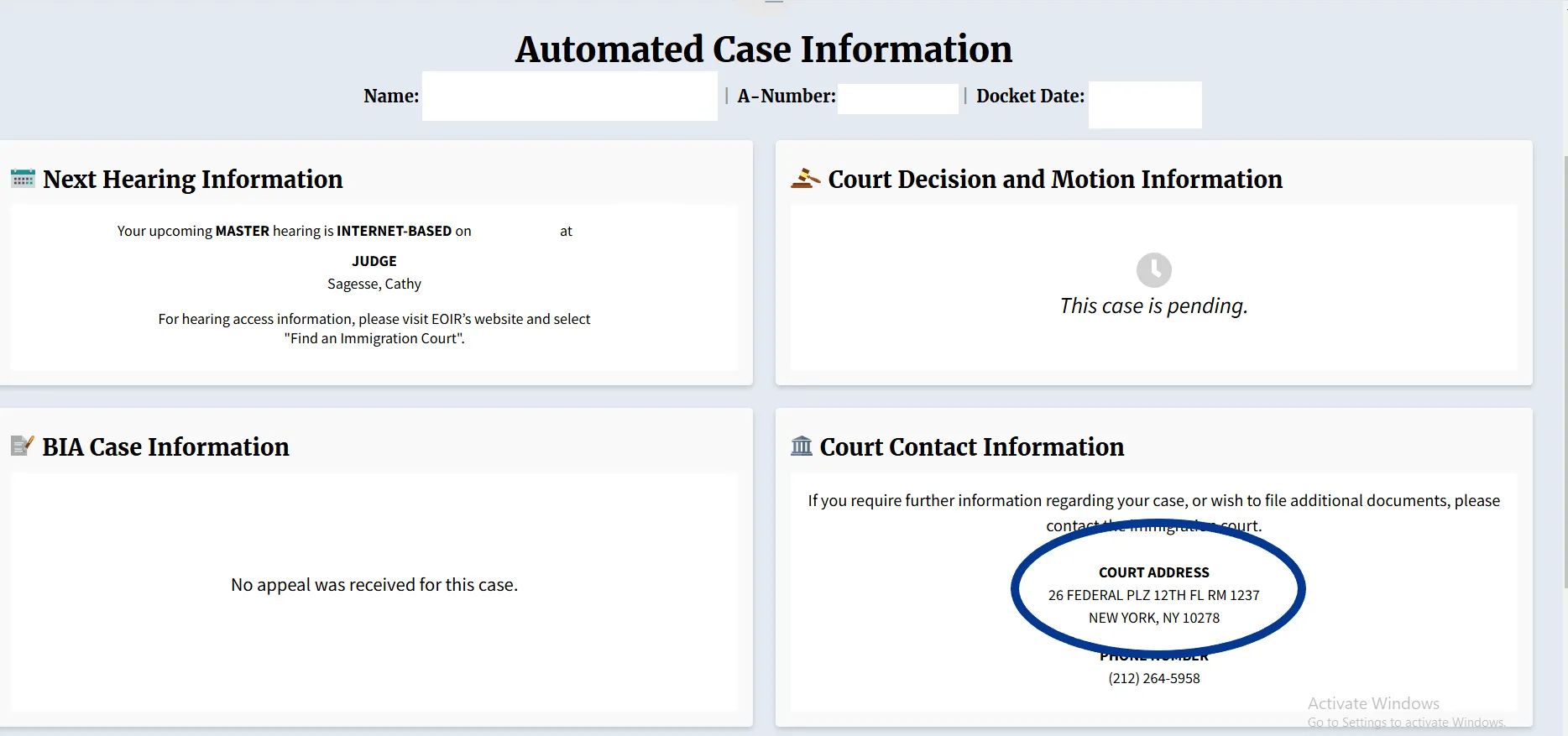
You must find your immigration judge’s court room and enter it at your scheduled time.
Immigration courts typically print the names, A-numbers and hearing times of the respondents scheduled to appear before a particular judge on that day.
It’s recommended that you visit the immigration court building prior to the scheduled hearing, so you can familiarize yourself with the building, and locate your immigration judge’s court room. On the hearing day, arrive 30 mins earlier to allow enough time to pass the building security checks.
How to attend the immigration court hearing via Internet (Webex)
If your hearing is scheduled via the Internet, it means that you do not need to appear in person.
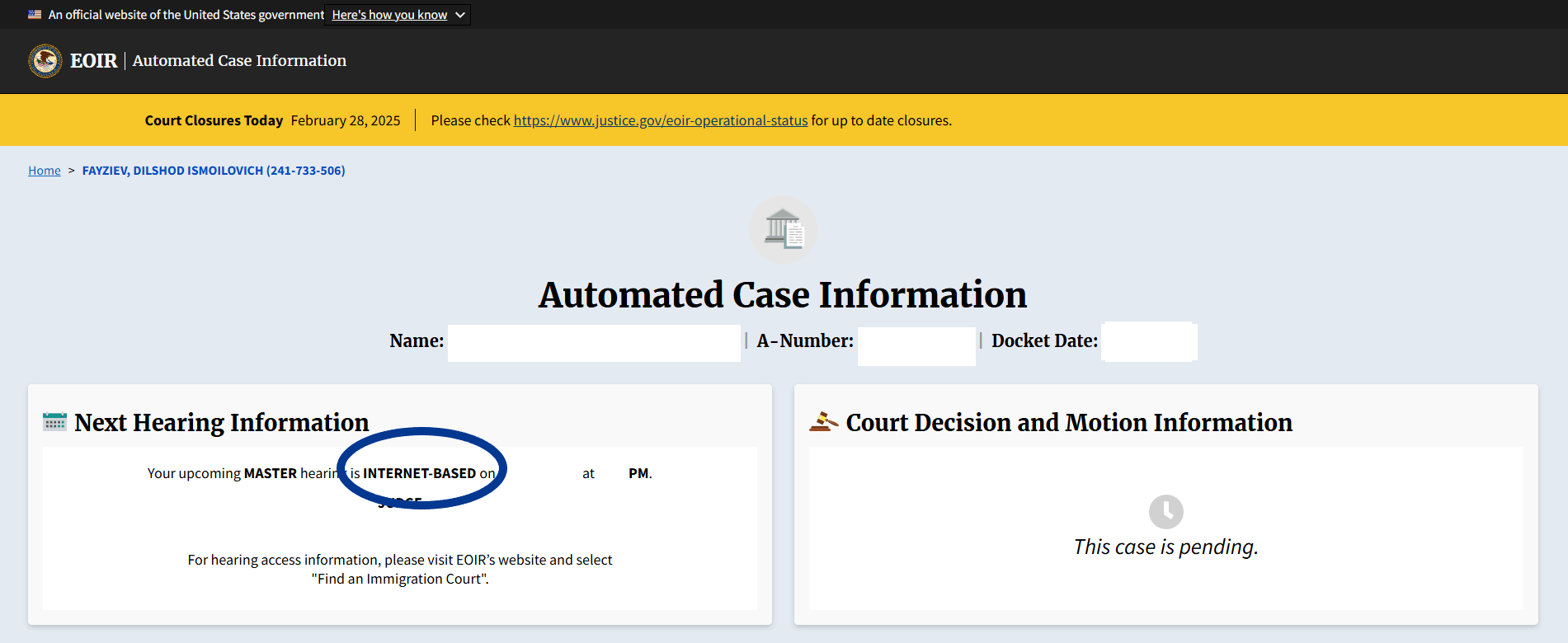
Instead, you must create a free Webex account and join your immigration judge’s Webex link that can be found here, at the time of your scheduled hearing.
Search for your immigration court location and your immigration judge name.
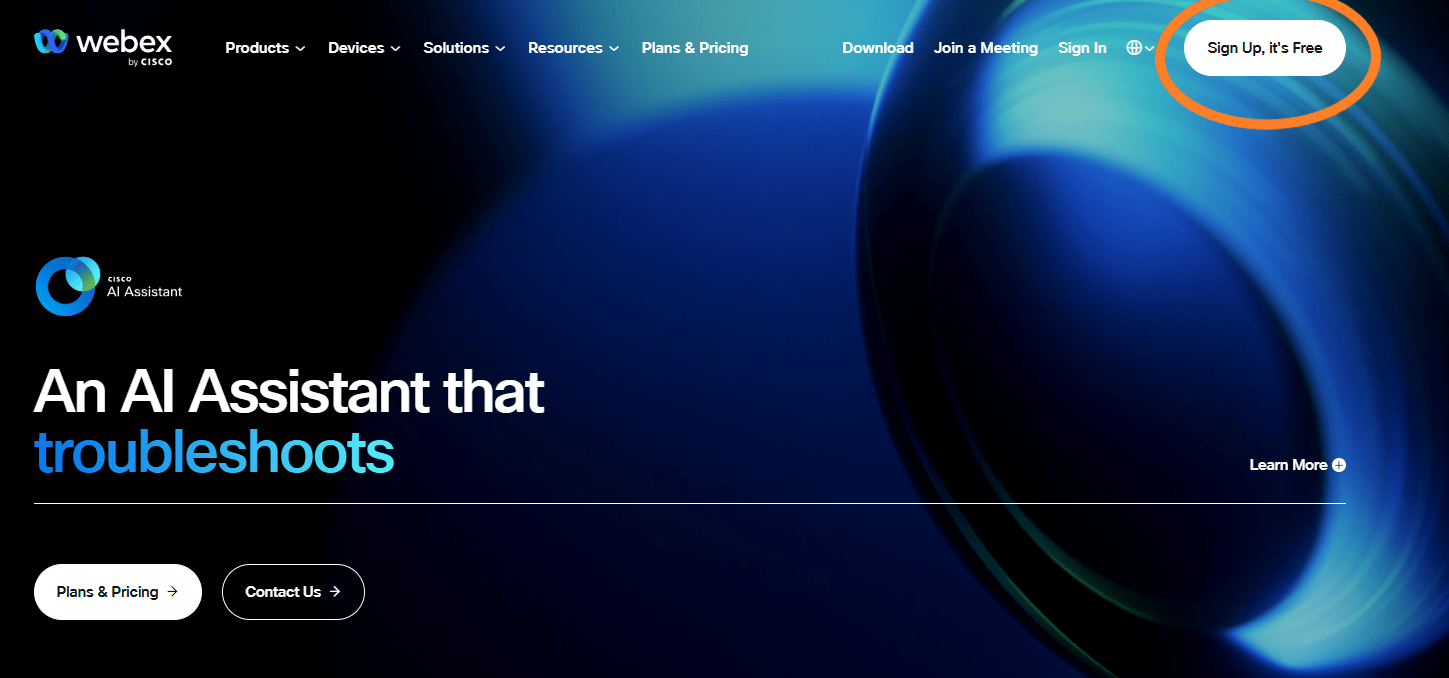
Register the free Webex account under your name.
You will need to install the Webex app on a device that has a video camera and audio (smartphone, laptop, or computer).
Make sure that you are in a quiet room and practice using the Webex app (such as turning on the microphone and video camera), prior to your hearing.
You must also have a good Internet connection on the hearing day.
If your video or audio freezes or malfunctions, the immigration judge might decide to reschedule your hearing.
What is Notice to Appear (Form I-862)
U.S. Department of Homeland Security (“DHS”) is the federal agency responsible for adjudication of immigration applications and enforcement of U.S. immigration laws.
If you have ever been issued a Notice to Appear (NTA, DHS Form I-862), it means that the DHS has found that you are removable (deportable) from the U.S. because you do not possess valid nonimmigrant or immigrant status, or otherwise are subject to deportation.
Notice to Appear contains the following information:
- Your name
- Your A-number
- Manner of your entry into the U.S. (date and location of the most recent entry)
- Country of your birth and nationality
- Allegations of your removability
- Date and location of your next immigration hearing
- Your signature confirming that you have received this notice
- Name and signature of the CBP or DHS officer who served this notice on you
When DHS issues a Notice to Appear and the foreign national being charged has read and signed this notice, it means that the government has duly served this document.
After DHS properly serves the Notice to Appear, the next step is scheduling of an immigration court hearing.
In immigration court, the person being deported (“respondent”) will be seen by the immigration judge who will decide whether the respondent qualifies for any type of relief (for example, asylum or withholding of removal).
See Also:
The post EOIR Case Status appeared first on Williams Law.
CPT, Curricular Practical Training 19 Feb 2025, 5:20 pm
Last Updated: April 3, 2025.
What is F-1 CPT
CPT (Curricular Practical Training) is a type of employment that is related to an F-1 student’s area of study.
F-1 students can engage in three types of practical training:
- CPT (Curricular Practical Training);
- OPT (Optional Practical Training) – pre-completion or post-completion
- STEM OPT (Science, Technology, Engineering, and Mathematics Optional Practical Training extension).
Differences between each type of practical training:
|
Type of practical training (PT) |
Eligibility |
Differences |
| CPT |
Note: English language students are not eligible for CPT |
|
| OPT | Pre-Completion OPT eligibility requirements:
Post-Completion OPT eligibility requirements:
Note: English language students are not eligible for OPT
|
|
| STEM OPT |
|
|
How to apply for F-1 CPT
The F-1 CPT application process includes the following steps:
- Students contacts the DSO (Designated School Official) to request CPT
- DSO reviews the student’s eligibility
- DSO authorizes CPT period for a specific employer
- DSO signs Form I-20
- Student can start work only on or after the date indicated on I-20 form’s CPT authorization
F-1 CPT I-9
To prove F-1 student’s CPT employment authorization for Form I-9, Employment Eligibility Verification purposes, the following original documents can be submitted:
- Valid foreign passport
- I-94
- I-20 Form with CPT authorization
F-1 CPT grace period
F-1 visa holders must depart the U.S. within 60 days after their program’s end date. The program’s end date is listed on your Form I-20, Certificate of Eligibility for Nonimmigrant Student Status.
If you leave the US before the end of your grace period, the remaining part of the grace period will be lost.
You cannot depart the US and re-enter the country during the grace period.
If you want to stay lawfully in the country after the expiration of your grace period, you can take the following actions:
- Transfer to a different school and begin a new academic program
- Start a new degree program (for example, master’s to PhD)
- Change your nonimmigrant status (if eligible, for example, change to H-1B)
F-1 CPT EAD
F-1 CPT employment does not require an Employment Authorization Document (EAD). Your Form I-20 with DSO’s CPT authorization dates can serve as proof of your employment authorization.
See Also:
I-765 Form – How to Get a Work Permit and Social Security Number (SSN)
The post CPT, Curricular Practical Training appeared first on Williams Law.
I-94, Arrival/Departure Record 18 Feb 2025, 7:37 pm
Last Updated: April 3, 2025.
What is USCIS Form I-94?
Form I-94, also known as “Arrival/Departure Record” is an electronic document issued by the Department of Homeland Security to foreign nationals who enter the U.S. on different types of visas.
Form I-94 can be used to confirm foreign national’s authorized period of stay in the U.S. and in the Adjustment of Status process.
Form I-94 contains the following information:
- Admission I-94 Record Number – this is your unique I-94 number
- Arrival/Issued Date – date of your most recent entry
- Class of Admission – type of your nonimmigrant visa, ESTA (Visa Waiver Program), or parole category
- Admit Until Date – period of your authorized stay in the U.S.
- Last/Surname – traveler’s last name
- First (Given) Name – traveler’s first and middle name (if applicable)
- Birth Date – traveler’s date of birth
- Document Number – traveler’s passport number
- Country of Citizenship – country of traveler’s citizenship
There are three types of I-94 records:
| Type of I-94 | Who receives it | Issued by | How to obtain it |
| Most common – I-94 issued upon arrival in the United States | Nonimmigrant visa holders: | CBP (Customs and Border Patrol):
|
Can be obtained online by entering your name, date of birth, passport number and country of your citizenship
Note: Prior to April 30, 2013, CBP issued hard copy I-94 forms. |
| Change or extension of nonimmigrant status | Nonimmigrant visa holders who have changed or extended their nonimmigrant status while in the U.S. | USCIS | USCIS upon approval of Form I-539 or I-129 mails the hard copy approval notice, with an attached I-94 form |
| Asylees | Foreign nationals who have been granted asylum status by USCIS asylum office or immigration judges | USCIS field office | Asylees must contact USCIS by phone (800-375-5283) and set up an appointment for obtaining I-94 form |
Who doesn’t need I-94?
The following groups of individuals are not issued I-94 forms:
- US citizens
- Green card holders (permanent residents)
- Immigrant visa holders
- Canadian citizens in transit or visiting the US temporarily
Where can I find my I-94?
You can find your I-94, Arrival/Departure Record, by visiting the Department of Homeland Security website:
- Visit https://i94.cbp.dhs.gov/home
- Select “Get Most Recent I-94”
- Click “I acknowledge and agree” to the Terms of Service
- Enter your first name
- Enter your last name
- Enter your date of birth
- Enter your country of citizenship
- Enter your passport number (if you have previously entered the US using a different passport, try entering the old passport number)
- The travel history can also be obtained by clicking on the “Get this traveler’s travel history”
- On the “Travel History Results” page you can find the most recent entries to the U.S., dates and ports of each entry.
How do I get an approved I-94 Form?
For foreign nationals arriving in the US by air or sea, Form I-94 is issued electronically by CBP (Customs and Border Patrol) which can be downloaded online.
Foreign nationals arriving in the US by land (for example, Canadian citizens), can either apply for I-94 in person at the port of entry or electronically within 7 days before their planned date of travel. There’s a $6 fee for an advance electronic I-94 application.
Is an I-94 the same as a visa?
No, I-94 is not the same as a visa. You will obtain an I-94 record only after entering the US on a nonimmigrant visa. Visas are issued by US consulates abroad and the visa expiration date regulates the time period during which you can come to the U.S. to apply to enter (“admission”). I-94 is issued by Customs and Border Patrol (CBP) upon arrival in the U.S. On Form I-94 you can find the authorized period of your stay (“Admit until”) which can be used for different purposes (for example, to prove that you have maintained lawful nonimmigrant status).
How to replace Form I-94?
If you need to replace your I-94 record, you can file Form I-102, Application for Replacement/Initial Nonimmigrant Arrival-Departure Document with USCIS.
Form I-102 can be filed in the following situations:
- You were not issued Form I-94 when you arrived in the U.S.
- Replacement of hard copy I-94 record (if you entered the US before April 30, 2013)
- You entered the US after April 30, 2013 but cannot obtain your electronic I-94 from the CBP website
- Correction of mistakes on Form I-94 due to DHS (Department of Homeland Security) fault
The following I-94 errors can be corrected:
- Incorrect name spelling
- Incorrect date of birth
- Incorrect class of admission
- Incorrect “admit until” date
- Incorrect duration of stay
- Incorrect date of entry
- Missing date of entry
Form I-102 filing fee is $560 for general category applicants. If you’re filing Form I-102 to correct a mistake made by CBP, no filing fee is required.
Form I-102 average processing time according to the USCIS Processing Times page is anywhere from 1.5 months to 42 months.
Learn more: Form I-102, Application for Replacement/Initial Nonimmigrant Arrival-Departure Document
Note: you cannot file Form I-102 to request an I-94 record if you entered the US without being inspected by CBP.
I-94 extension USCIS
If you need to extend your nonimmigrant stay in the U.S., you must meet the following eligibility criteria:
- You were lawfully admitted to the U.S.
- You have not violated immigration laws (for example, visa overstay or unauthorized employment). Exception: immediate relatives of US citizens are not penalized for such violations.
- You extend your stay (if eligible) prior to expiration of your current Form I-94
The extension application procedure depends on your category. Some of the eligible categories include:
| Change/Extension Category | Category description | Extension form to be filed with USCIS |
| Employment-based categories | ||
| E-1 or E-2 | Treaty Traders, Treaty Investors, and Employees of Treaty Traders and Treaty Investors | Form I-129, Petition for Nonimmigrant Worker
Note: dependents of certain employment-based categories must file I-539. Forms I-129 and I-539 can be filed with USCIS together |
| E-3 | Skilled Professionals from Australia | |
| H-1B, H-2A, H-2B, or H-3 | Temporary Skilled or Unskilled Workers and Trainees | |
| L-1A or L-1B | Intracompany Transferees | |
| O-1 or O-2 | Aliens with Extraordinary Ability and Their Assistants | |
| P-1, P-2, or P-3 | Athletes and Entertainers | |
| Q-1 | International Cultural Exchange Visitors | |
| R-1 | Religious Workers | |
| TN-1 or TN-2 | Canadians and Mexicans under the North American Free Trade Agreement (NAFTA) | |
| Other categories | ||
| A-3 | Attendants, Servants, Personal Employees of Diplomatic and Other
Government Officials and Immediate Family |
Form I-539, Application to Extend/Change Nonimmigrant Status
(spouses and children in the same category can be included on one form I-539) |
| B-1 and B-2 | Tourist visa holders | |
| E-1 and E-2 | Dependents of E-1 and E-2 | |
| E-3 | Dependents of E-3 | |
| G-5 | Attendants, Servants, Personal Employees of Foreign Government Officials and Immediate Family | |
| H-4 | Dependents of H-1B | |
| K-3 and K-4 | Spouse of U.S. Citizen and Minor Child Accompanying/Following to Join | |
| L-2 | Dependents of L-1 | |
| M | Vocational Students and Dependents | |
| N | Parents and Children of Certain People Who Have Been Granted Special Immigrant Status | |
| NATO-7 | Attendants, Servants, Personal Employees of NATO Representatives, Officials, Employees and Immediate Family Members | |
| O-3 | Dependents of O-1 | |
| P-4 | Dependents of Athletes and Entertainers | |
| R-2 | Dependents of R-1visa holders | |
| All “V” categories | Certain Second-Preference Beneficiaries | |
| TD | Dependents of TN visa holders | |
Who is not eligible to extend their I-94 in the U.S.
The following groups of foreign nationals are not eligible to extend their I-94 stay in the U.S.:
- C – Aliens in transit
- D – Crewman
- K-1 and K-2 – Fiancé(e)s of US citizens and children of fiancé(e)s – this category can instead file Form I-485 with USCIS to apply for permanent residency (if fiancé(e) married the US citizen)
- S – Witness or Informant beyond a total of 3 years
- TWOV – Transit Without Visa
- WT – Visa Waiver Program (ESTA). Note: if you are an immediate relative of a US citizen who entered the US on ESTA, you might be eligible for Adjustment of Status. Consult with an attorney to discuss your eligibility.
Learn More:
Form I-102, Application for Replacement/Initial Nonimmigrant Arrival-Departure Document
Form I-539, Application to Extend/Change Nonimmigrant Status
The post I-94, Arrival/Departure Record appeared first on Williams Law.
